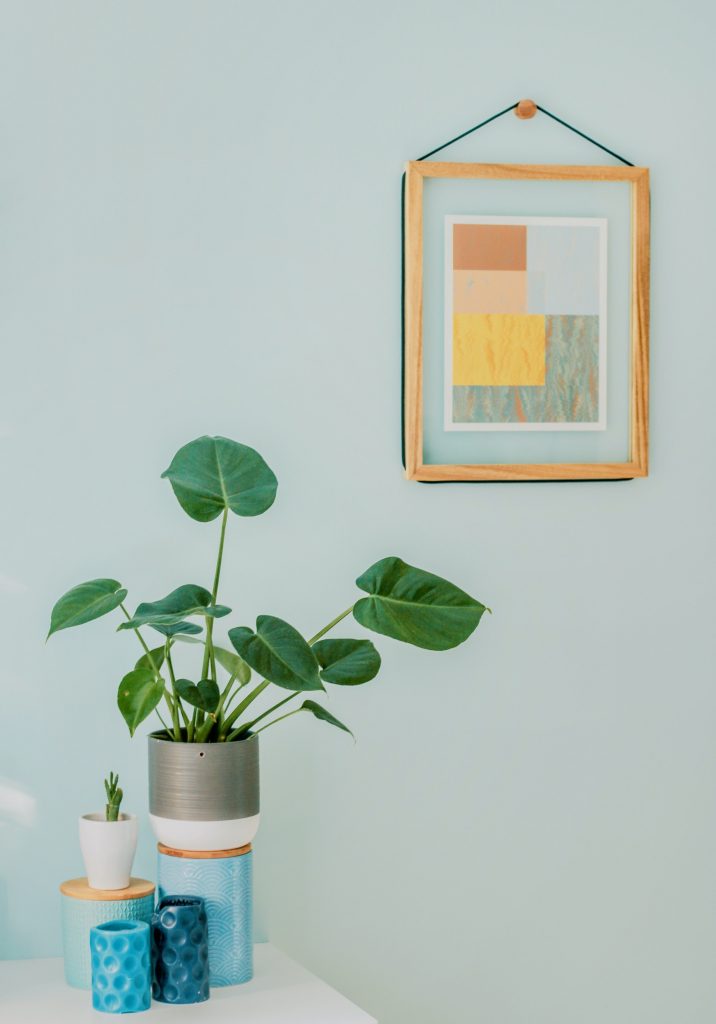When looking for a planter for your plant, you may be surrounded by a lot of options. Design, style, benefits, features; all important factors when considering the right planter. One key factor of a good planter is the material in which it is built. We’ll go over some of the most common planter materials and rank them from best to work for the quality of life for your plant.
Starting with the best, healthiest option:
Terra Cotta Planters
Reddish-brown in color, these pots and planters are made of clay. Very popular, these pots are easy to distinguish and usually come with a drainage plate underneath. The pots are very nice for plants that prefer a lot of drainage since they are porous.
This material is very durable, being a good option for both indoor and outdoor plants. These pots can be reused multiple times safely.
These pots can be heavy, with large terra cotta plants being very hard to move once a plant has been placed.
Fiberglass Planters
Planters made of fiberglass are a modern approach that are great for durability.
They are a great durable option for both indoor and outdoor plants, and can handle rough conditions. Most scratches or small damages can be buffed out or painted over easily.
The plant health benefits of fiberglass include UV protection from hot climates. It is not porous, holes need to be drilled in the bottom for adequate drainage. The material itself won’t cause chemicals to come into the soil, but without good airflow your plants may suffer without drainage and space.
Wood Planters
These planters come in all wood types, so they can vary extensively. Like metal planters make sure to take note of the material and wood used to determine the weight and quality of the planter.
These planters are more natural so they are a healthy option for a plant, but it is important to watch out for rot that can occur to the wood over time. These type of planters do have a shelf life, usually ranging between 10 to 20 years depending on the wood type and environment. Being made from wood, these planters can be more costly, and if upkeep costs are considered can include maintenance as well.
Concrete Planters
More commonly seen, these planters are made of many chemicals to bind and harden the mixture. Without paint they are a light gray color but can be modified to fit any style or shape.
The weight of concrete planters can be a positive or a negative depending on the plant and environment. For outdoor plants, the weight can prevent harsh winds or rough weather from moving or shifting this planter. It can be a difficult process to move or handle due to this same reason of a higher weight.
Concrete is a damaging product to make for the ecosystem, which is important to note when making a decision. A concrete planter is strong yet also brittle, so a few knocks in a certain fashion can cause serious damage to a concrete planter. Water can also slowly cause damage to these planers.
Due to the chemical composition, concrete chemicals may seep into the soil, and this may cause damage to certain plants.
Plastic Planters
Plastic is widely used and common for many items. Made from crude oil, this is a non-renewable source. The environmental impacts are pretty negative and can be a pain point for many. The creation of plastic involved many chemicals, and this can seep into the soil over time. If you are going to use plastic make sure to find one with uPVC and less toxic makeup to minimize the effects. Plastic is also non porous, so make sure there are holes for proper damage, and ensure that the soil and roots have space and ability to breath.
Plastic planters are the more affordable option, being the most mass-produced material. However they are also more likely to break or damage. They usually have a light build, and the elements can erode then break these plants over time.
Metal Planters
There are various types of metal planters, with the makeup differing on the type of metal used. Be careful to note the specific makeup of the material since it can determine how the planter will sustain itself. For instance a steel metal planter will be fine indoors for a while, but outside it can rust quickly becoming red in hue due to the weathering elements.
Metal planters are not porous, so ensure that there are drainage holes in place to allow excess water to escape.
Metal is a strong durable material, being able to withstand drops, hits, and water (depending on the material). Depending on the makeup and size, these containers can be quite heavy which is an important factor to be aware of. Metal can also get very hot when exposed to high intensity heat over time. If the pot becomes hot it can damage the soil and roots and hurt the plant over time.
Foam Planters
Made up of plastic chemicals, they range in the grades from thick to thin. Not exactly plastic, these planters can be pretty thick for the weight they carry. While these may appear thick, they are still made of up materials similar to plastic and can be easy to damage or break. WIth such a low weight these pots can be moved and placed with ease. Yet with this trade off these planters won’t last long, and the elements can wear them down within 3 years. Plastic components also make this option not that eco friendly in the long run.
The makeup of a plant’s pot can make or break the health and happiness of a plant. Make sure to take into account your climate and use case before making a selection. Whatever you decide to go with, make sure to care and monitor your plant. If your plant is happy, growing, and green; you can rest assured you made the right choice.



